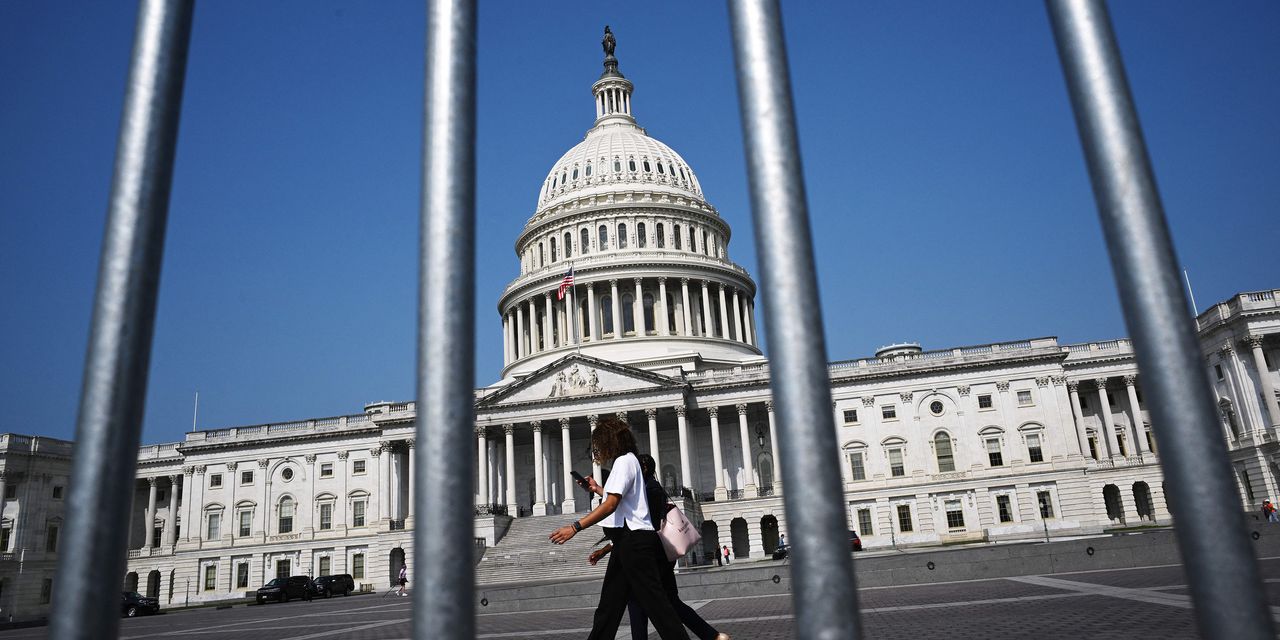As the U.S. edges closer to the debt-ceiling deadline, Dave Boniface has been fielding calls and emails from older clients.
“The anxiety is rising pretty quickly,” says Boniface, a financial advisor with Legacy Capital, an affiliate of LPL Financial, in Forest Lake, Minn.
Retirees are concerned about how the economy will fare if lawmakers can’t reach an agreement to lift the debt ceiling, the statutory limit on what the country can borrow to fund its operations. And they’re wondering if they should take any measures to protect their portfolios, Boniface says. While the uncertainty is real and the worry understandable, it’s best not to make any drastic moves, he and other experts agree.
Most observers expect the political drama of the debt ceiling negotiations to end in a last-minute resolution. Still, the possibility of a debt-ceiling breach and subsequent U.S. debt default is an unsettling prospect for investors still scarred from last year’s steep market losses. Treasury Secretary Janet Yellen has warned of the “economic and financial catastrophe” that would transpire in the worst-case scenario.
The government hit the current debt ceiling of $31.4 trillion on Jan. 19, and has since then taken what Yellen has called “extraordinary measures” to keep the government afloat. Yellen has said that these measures could be exhausted soon, and the U.S. risks defaulting on its debt as early as June 1 if lawmakers don’t act within a matter of days.
Retirees could be especially vulnerable to market losses, if they’re forced to withdraw funds from a declining portfolio to make ends meet. Social Security payments could also be delayed if the U.S. defaults.
It might be tempting to pull your money from the stock market and sit out any volatility. But that would be ill-advised, experts say. Even in the worst-case scenario, stocks will eventually recover. The market’s best days tend to be clustered near its worst days, and you’re going to miss much of the rebound if you’re sitting on the sidelines.
Over a 20-year period, missing the 10 best days results in annualized returns that are roughly half of what you would have gotten had you stayed invested and not tried to time the market, according to research from J.P. Morgan Asset Management.
Many pros recommend that retirees maintain a healthy cash cushion at all times. Christine Benz, director of personal finance and retirement planning for
Morningstar,
advises that retirees keep between one and two year’s worth of portfolio withdrawals in cash. (Note, that’s just the portion of expenses not covered by Social Security or other income sources.)
A cash allocation will insulate your portfolio from market volatility. If the market declines, you can tap your cash and leave your investments alone. Withdrawing from a declining balance will accelerate your portfolio’s depletion.
If you don’t have an adequate cash cushion, it isn’t too late to pad it, Benz says. The Standard & Poor’s 500 is up nearly 8% for the year. You could sell some appreciated stock and bolster your cash reserves.
Boniface says he makes sure his retired clients have a reasonable runway of required distributions in low-volatility liquid assets. For anxious clients, he might raise an additional $10,000 to $15,000 cash, even if it isn’t financially necessary. Boosting their liquidity makes them feel like they did something proactive to protect their portfolio and will reduce the chances that they’ll bail out of the market if the going gets rough.
“It’s only for the individual that knows they have their finger on the sell button,” Boniface says.
Write to [email protected]
Read the full article here







